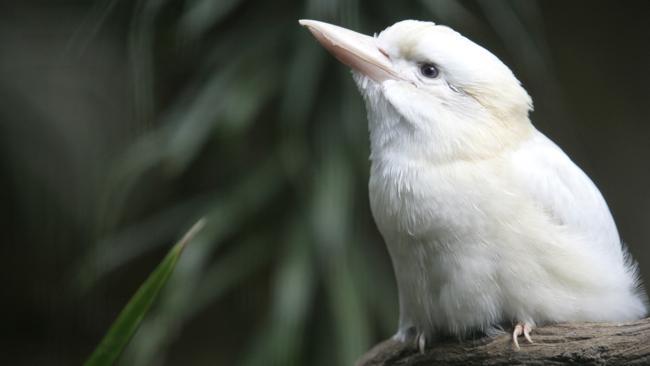Mt Gravatt residents flock together to enjoy sight of rare white kookaburra
RESIDENTS of Mt Gravatt are enjoying a surprise arrival at their southside suburb - a white kookaburra.

QLD News
Don't miss out on the headlines from QLD News. Followed categories will be added to My News.
RESIDENTS of Mt Gravatt are enjoying a surprise arrival at their southside suburb - a white kookaburra.
The bird has been in the Mt Gravatt East area for at least eight months as part of two large family groups.
It has become so popular that resident Matt Meersbergen has uploaded vision of the kookaburra on to YouTube and even created a children's app inspired by the kookaburras living in his street.
"I was going to work one day and looked out the window to see this big white bird,'' Mr Meersbergen said.
"At first I thought it was a cockatoo but when I had a closer look, I realised it was a kookaburra.''
Mr Meersbergen, who works in animation, decided to share the unusual bird around via the internet.
Queensland Museum bird expert Greg Czechura said it was not clear whether the kookaburra was albino or had leucism, a condition that affects only the bird's feathers.
Albinism was a relatively common genetic condition that affected a wide range of species, from humans, to birds, possums, wallabies and even reptiles.
Perhaps the most locally famous is Migaloo, the east coast humpback whale.
Mr Czechura said instances of albinism and or leucism had long been recorded in kookaburras in the Mt Gravatt region.
"It suggests these conditions are somewhat fixed in those particular families,'' he said. "Perhaps there is not a lot of outbreeding going on. You get all sorts of weird things happen in the urban environment.''
Mr Czechura said albanisim was particularly marked in butcherbirds and especially on the Redcliffe Peninsular, north of Brisbane.
It was not clear if birds were not moving about much to interbreed or whether there was a dominant gene at play.
He said albino animals usually did it tough in the bush.
Kookaburras had bred up into relatively high numbers as many species had over the past three wet years. This had led to concerns about their impact on smaller bird species and reptiles.
It was important not to feed kookaburras and not to clear undergrowth which allowed smaller species to survive.
An east coast native, kookaburras have been introduced into WA where they have become a major pest, preying on rare reptile species and chickens.


